You’ve put a ton of work into creating and launching a social media campaign, and now it’s over. But how well did your campaign do? Measuring your campaign metrics’s impact is crucial to justifying your social media efforts, optimizing future strategies, and demonstrating ROI (and yes, your worth) to stakeholders.
In this article, we’ll show you how to use Agorapulse to evaluate your campaign’s success. You’ll get a clear roadmap to turn your data into actionable insights, ensuring that, from this point forward, each social media campaign will do better than the last.
1. Plan Your Campaign Metrics
Want a successful campaign? Start by not getting ahead of yourself.
Take the time to lay the groundwork for a successful campaign. This includes setting clear goals and creating content tailored to your target persona.
Set that goal
Before you create a single post for your campaign, think of your “why.” Why are you spending resources on this campaign? Is your goal to:
- Grow your email list?
- Book more demos?
- Get more sales?
- Establish. your thought leadership?
Defining your “North Star” goal” (aka your “why”) will help you decide what success metrics to establish for your campaign.
Cater to your target persona
Who do you want to take the action you’re looking for? If you have a buyer persona that you want to speak to, write down their name. It’s not all about you and your goals—it’s also about what your target audience will be excited to see and act upon!
Based on that persona, determine what content will best resonate with that persona at the part of the funnel you want to send them through.
Another tip: Consider when your audience is most likely to be online. Are they early birds or night owls? Do they scroll through social media during lunch breaks or commutes? Jot down some hypotheses to create content with the greatest potential for success.
Once you’ve nailed your goal and target persona, start crafting and scheduling your campaign content. (There’s a great social media scheduler out there if you need one.)
Then, when the content goes live, start looking for metrics that indicate success.
2. Monitor Engagement for Campaign Metrics
Let’s zero in on the social media metrics we want to track en route to our goal. Engagement metrics are strong indicators of how your content encourages your audience to take a step forward.
Start with the key engagement metrics you should monitor across various social media platforms:
- Likes (or Facebook reactions)
- Dislikes (YouTube)
- Taps and swipes (Instagram Stories)
- Comments
- Shares (Facebook, Instagram, TikTok, YouTube)
- Reposts (X, LinkedIn)
- Adds to a playlist (YouTube)
- Saves
- Link clicks
Using Agorapulse, you can easily customize the date range to match your campaign start and end dates.
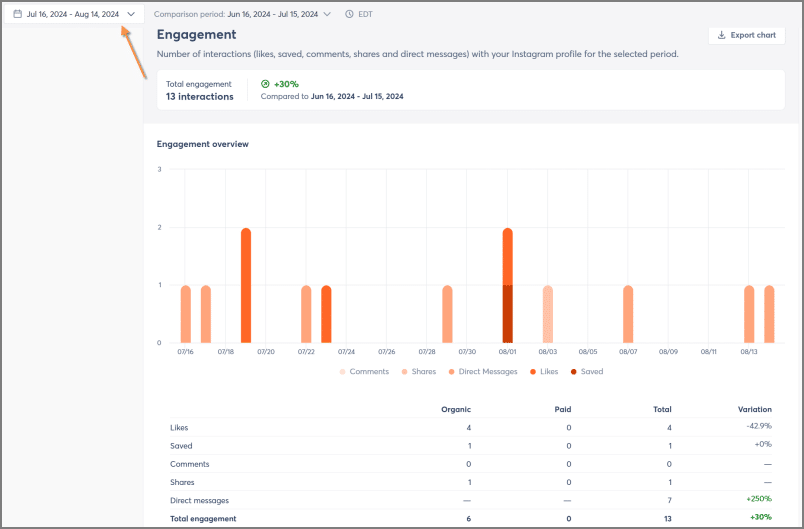
Engagement metrics via Agorapulse
By closely monitoring these engagement metrics, you’ll discover how your audience interacts with your campaign content. This data will help refine your approach and maximize your campaign’s impact.
In the next section, we’ll analyze content performance more deeply to understand which types of posts are driving the most engagement and contributing to your campaign goals.
3. Analyze Content Performance
Once you’ve digested the overview of your campaign’s engagement, dig deeper.
Did a particular type of content rack in more engagement? Did posting at a certain time or day yield stronger results?
Agorapulse’s analytics tools provide detailed insights into important metrics for each piece of content, including:
- Number of engaged users
- Organic, paid, and link clicks
- Organic, paid, and total comments
- Organic, paid, and total reach
- Organic, paid, and total impressions
- Engagement rate per reach
- Engagement rate per impression.
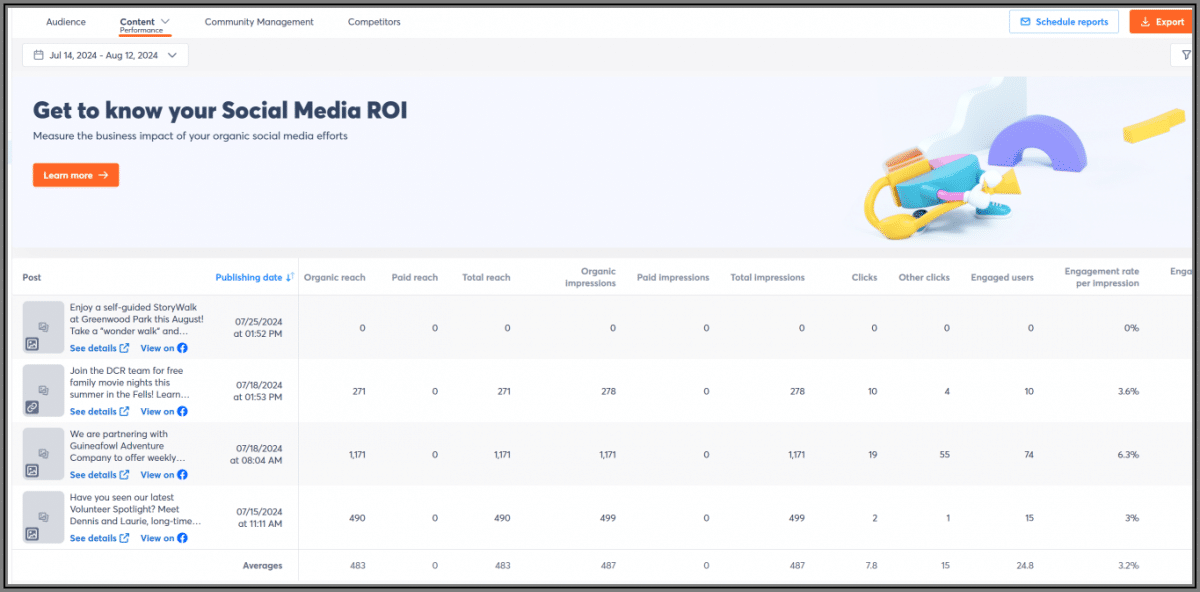
Analyze important metrics on the Agorapulse content performance chart.
Click on the campaign metrics you want to track, then filter from highest to lowest. To share these numbers with teammates, simply export the data as a PDF, CSV, or PPT.
Now, was this content similar to the content you thought would do well for this target audience in the past? If these high-performing posts matched what you noted in your campaign planning, consider this a sign to double down on this content with this audience.
Content types and formats
Understanding which content types and formats resonate best with your audience is crucial to increasing the effectiveness of your social media strategy.
Different platforms offer various post types, from links and photos to videos and plain text.
Instagram, for instance, provides a wide array of options. Are your feed posts outperforming Stories or Reels? Do single posts generate more engagement than carousels?
Knowing what type of content works best helps you allocate resources effectively and tailor your content strategy to your audience’s preferences. This knowledge is invaluable for planning future campaigns and maximizing engagement.
Let’s explore how to analyze this using Agorapulse.
Agorapulse provides a downloadable “best post type to publish” chart that shows the average engagement for each post type. Here’s an example that compares Instagram reels, stories, videos, images, and carousel posts.
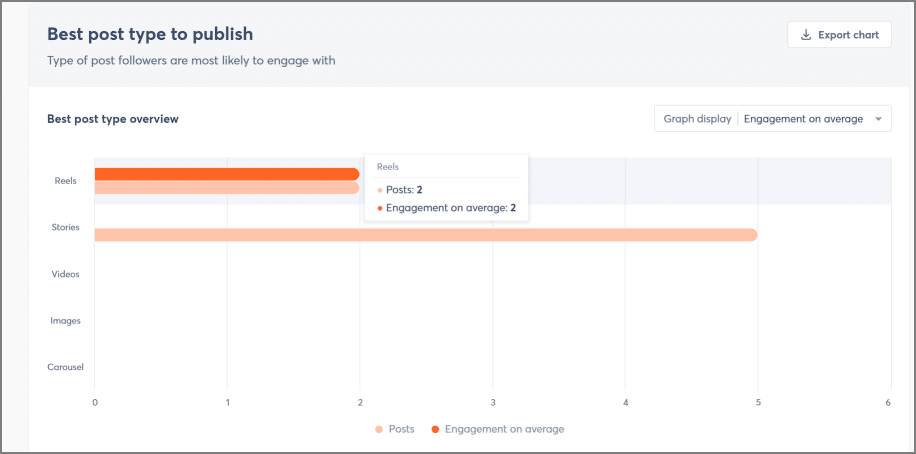
This chart shows that Instagram Reels outperformed Stories in engagement.
This information provides insights into what you should focus your creative energy on for a similar campaign for this target audience.
Best time to post
Social media never sleeps, but sometimes your target audience does. The “best day and time to publish” chart displays average engagement and reached users for content during specific timeframes.
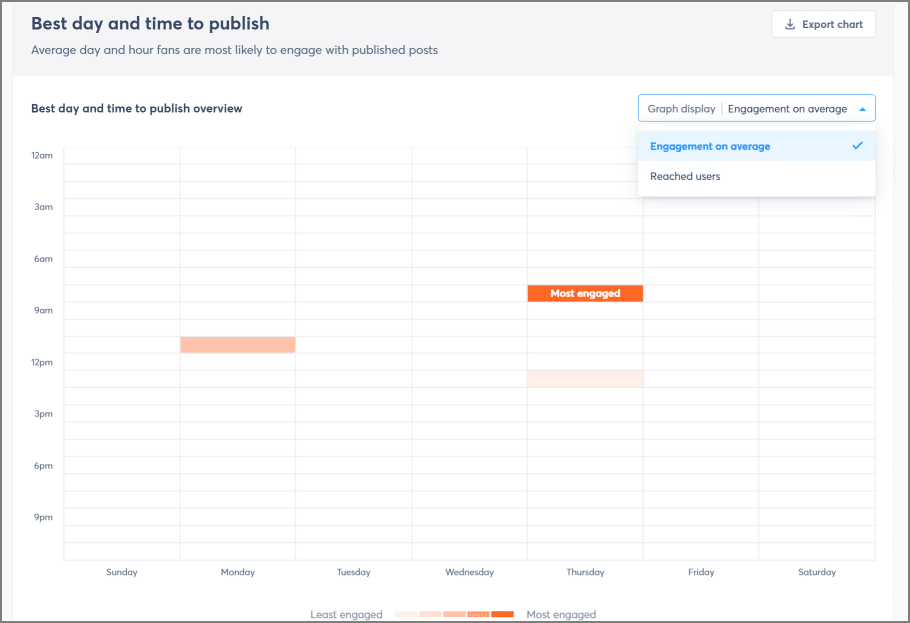
Optimize the timing of future content with “best day and time to publish” data.
Compare this information with your initial hypotheses from your campaign planning. Were your educated guesses about when to reach your target audience accurate? This analysis helps refine your posting schedule for greater impact in future campaigns (or perhaps mid-campaign if you’re a fanatical metrics checker!).

4. Measure ROI and Conversions
They say you can’t make money on social media. In most cases, it’s true. But you can make money from social media.
Conversions, leads, and sales occur when users click on social media and arrive on a landing page that encourages them to take additional action—like subscribing to your newsletter or booking a demo.
Tracking with UTM parameters
Using UTM parameters is crucial to measure the effectiveness of your social media campaign. UTM parameters tag your URLs with campaign-specific identifiers, enabling you to track the source and medium for each link click.

This detailed tracking helps you understand which social media platforms, content types, and campaigns drive the most traffic and conversions to your website.
The Google Analytics Campaign UTM Builder is a longstanding parameter tool that has been updated for GA4. Add your destination URL, then indicate the source, medium, and name to track your content as it goes from a link click to your landing page (and, hopefully, to a signup or sale).
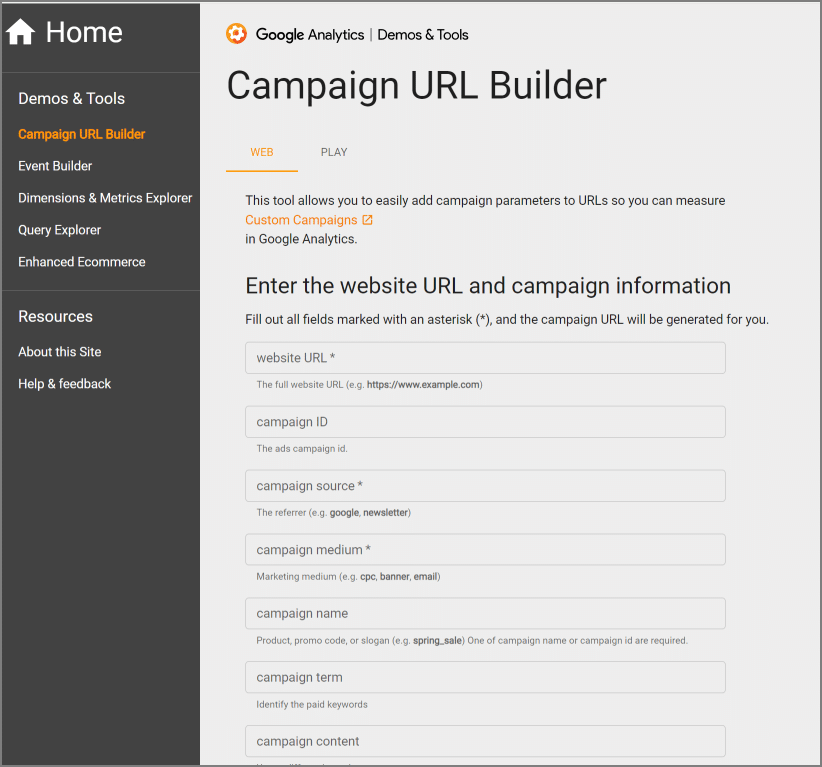
Google Analytics Campaign URL Builder for your campaign metrics
If you’re looking for a way to stop toggling between the Campaign UTM Builder and your social media management software, try building parameters directly in your Agorapulse account. Once you create a draft post with a URL, you’ll have the option to add a campaign UTM for that link.
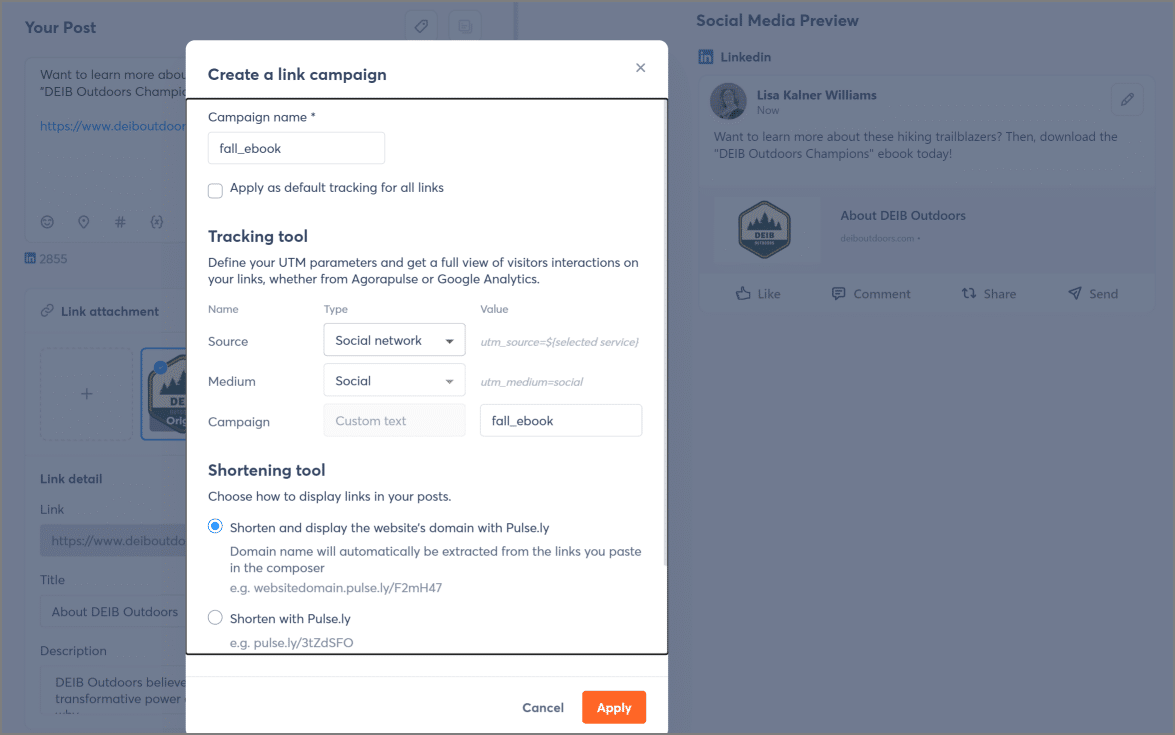
Agorapulse lets users build UTM parameters on its platform.
Website traffic from social media
Once the content with your campaign UTM links has been published, you’ll want to start tracking it.
On Google Analytics, monitor your campaign referral traffic by going to Reports > Business objectives >Generate leads >Traffic acquisition. Then, in the upper left-hand drop-down menu, select “Session source /medium.”
You’ll then see which social channels have been especially good in driving traffic.
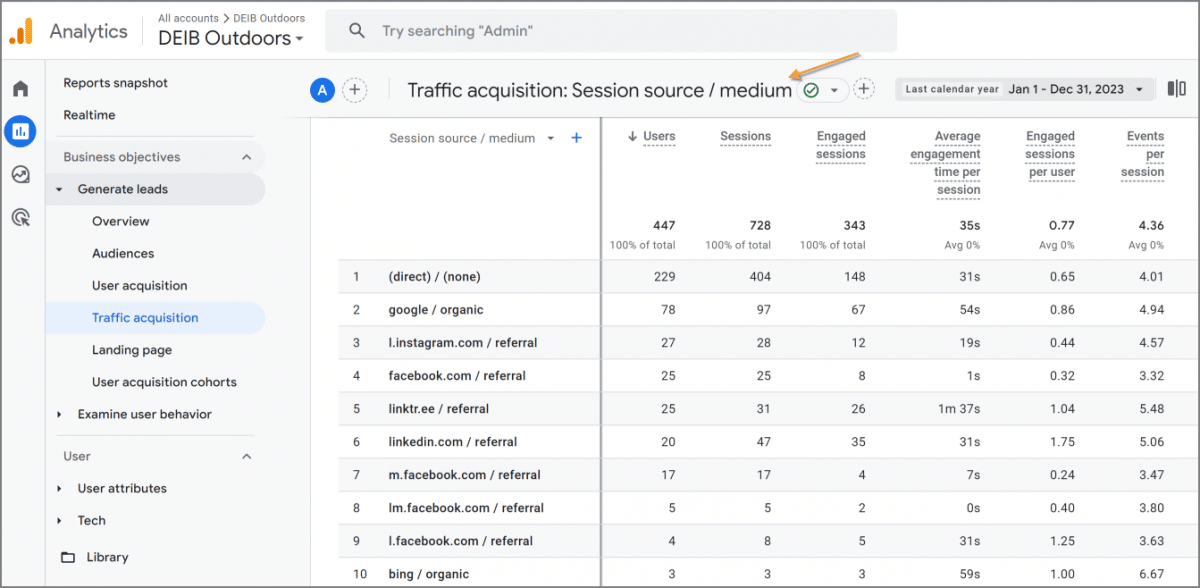
Google Analytics shows which social media platforms drive the most web traffic.
If you want to track social-to-web traffic within your social media management tool, Agorapulse’s Social Media ROI feature monitors your campaign’s performance across various channels.
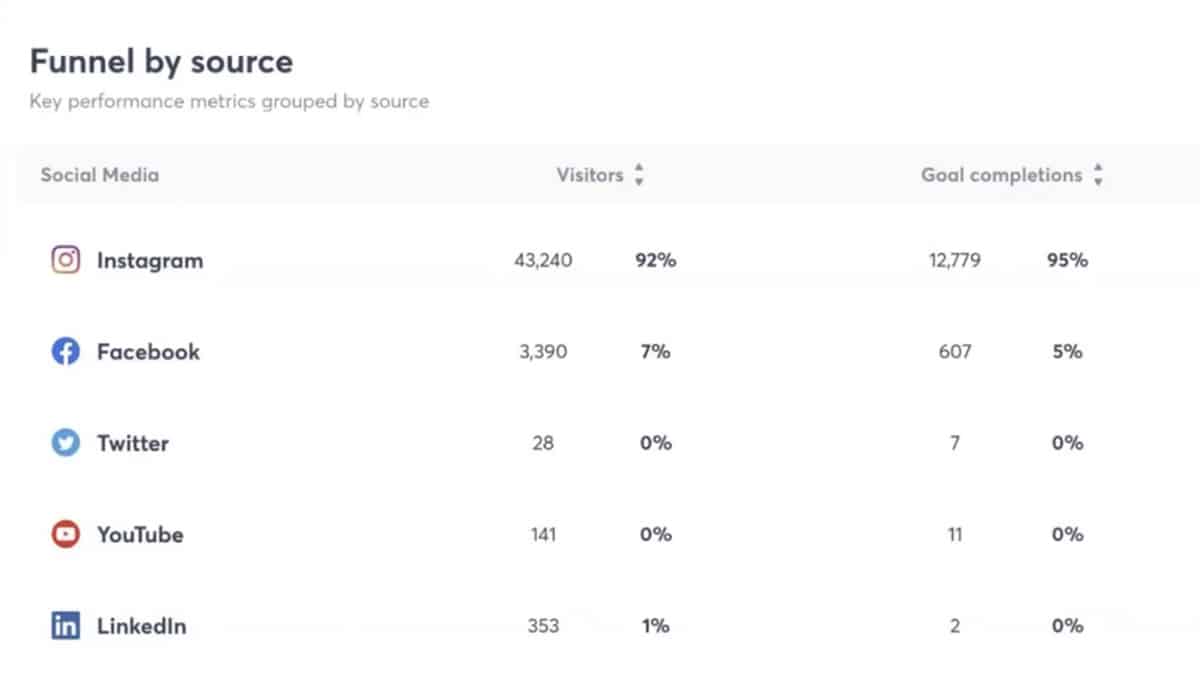
Funnel by source for key performance campaign metrics
Evaluate conversions and sales
To show the real value of your campaign metrics, be sure to track conversions and sales from social media. By measuring how many leads, sign-ups, or purchases result from your social media campaigns, you can optimize your strategies for better results.
If you’ve established conversion events in Google Analytics, you can track them by filtering results in the key events column.
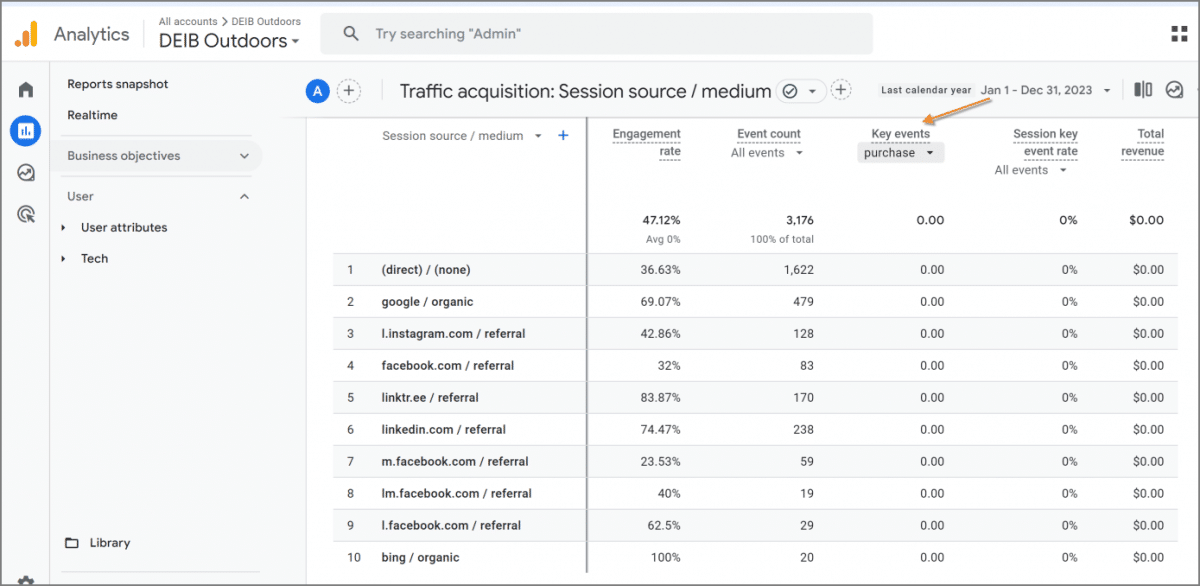
Check conversions on Google Analytics under “Key Events”
Tracking conversions within Agorapulse offers a streamlined approach to monitoring your social media ROI. The platform lets you see goal completions and their associated revenue.
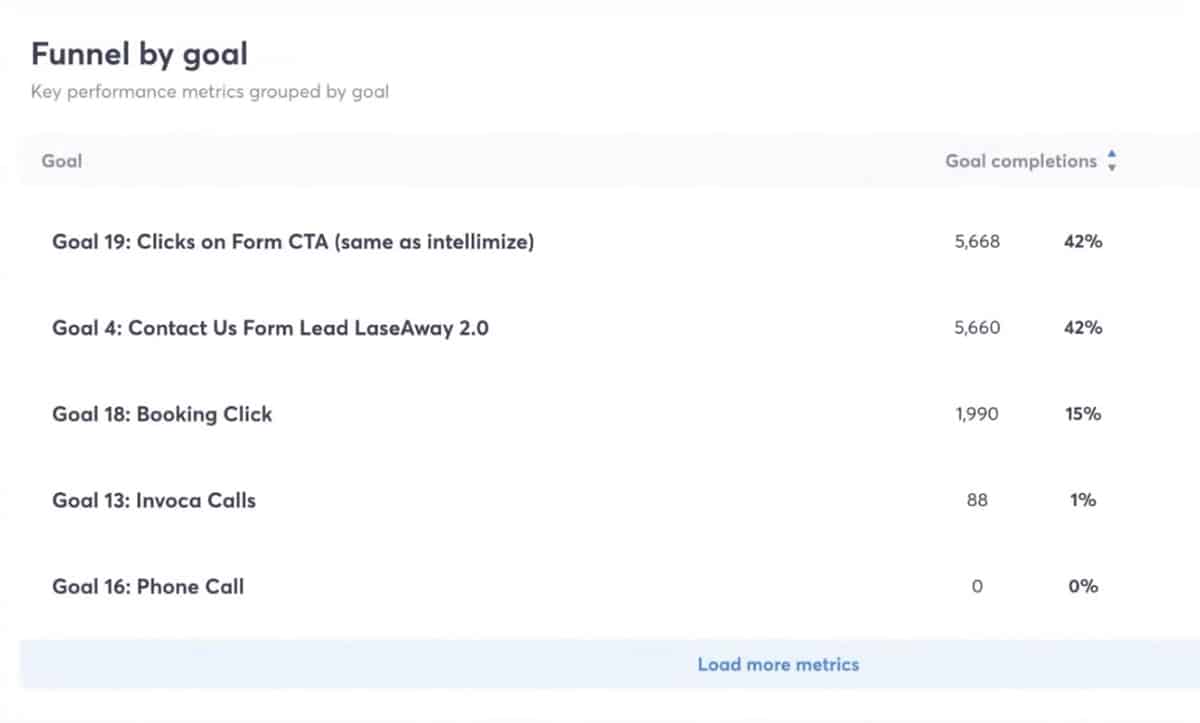
Funnel by goal metrics from Agorapulse
You can also see the performance of individual social media posts. This view shows you the number of visitors, transactions, and generated revenue associated with each content piece in your campaign.
By leveraging UTM parameters, Google Analytics, and Agorapulse’s ROI tracking features, you get a better handle on how your social media campaigns contribute to your bottom line.
5. Gather Sentiment and Brand Reputation Analysis
Everybody wants to know if your campaign brings in leads or revenue.
Smart marketers should also be curious about the brand’s reputation in the marketplace. Wouldn’t you rather have new newsletter subscribers who strongly favor your brand than subscribers who are meh about what your company stands for?
A campaign is a quick way to capture such sentiment to benchmark and share with colleagues.
Social media sentiment about your brand abounds–in comments that others leave on your content and in content others create. Agorapulse captures sentiment in both places.
In the social media inbox, positive, negative, and neutral sentiment labels are applied to:
- Comments on organic posts
- Comments on paid posts (Facebook and Instagram)
- Private messages.
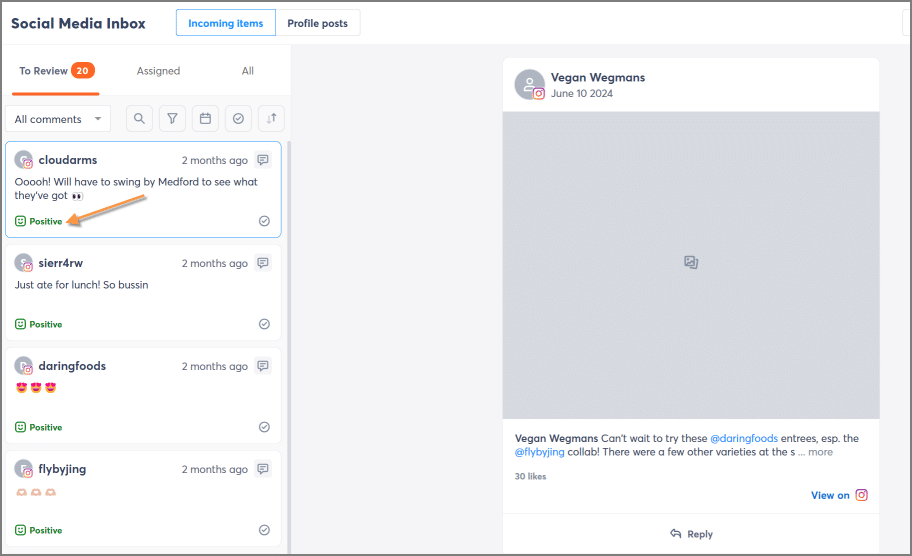
Review sentiment on social media comments in your Agorapulse inbox.
If the sentiment label doesn’t match the true meaning behind the comment – think of the paradox of the phrase “pretty ugly” for example – you can easily change it to be more accurate.
To track what others say about your brand in their content, you’ll need the Agorapulse listening add-on.
Here, you can track branded hashtags, mentions of your profile, and keywords related to your organization, depending on the social media channel. As with the inbox, sentiment is automatically applied.
Learn about the spread of positive, negative, and neutral sentiments about your brand. Scroll down the right-hand column of the screen to see which posts are associated with each sentiment type.
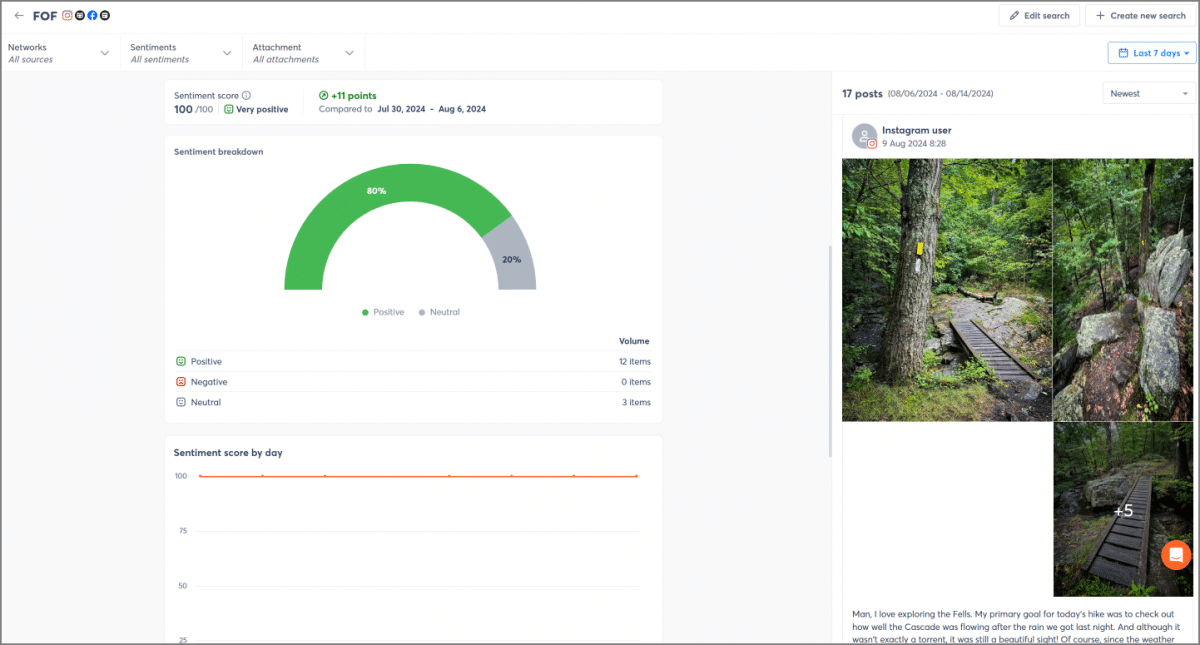
See the breakdown of sentiment by day and sentiment type.
6. Convert These Campaign Metrics Insights Into Future Planning
After analyzing your campaign’s performance, summarize your lessons learned for upcoming campaigns. Here are four tips to leverage these insights for future success:
- Identify top-performing content: Pinpoint which posts resonated most with your audience. Use this information to guide future content creation.
- Refine posting schedule: Based on engagement data, set your posting times to maximize reach and interaction.
- Improve weak areas: Address any underperforming aspects of your campaign, such as certain content types, platforms, or audience segments.
- Set new benchmarks: Use your campaign’s performance as a baseline for future goals and KPIs.
By putting your data-fueled insights into action, you’ll ensure that each campaign builds upon the success of the last one and drives continuous improvement in your social media marketing.
Conclusion: Measuring Your Campaign Metrics for Success
The key to a successful campaign relies on strategic planning, measuring data, and improving future planning based on those data.
By leveraging Agorapulse’s listening and reporting features, you can better understand–and explain–your campaign metrics’s effectiveness. Insights from these features can also help you refine your strategies, optimize content, and better connect with your target audience.
Curious about how Agorapulse can assist in helping you achieve great results with your next campaign? Sign up for a demo and find out!






